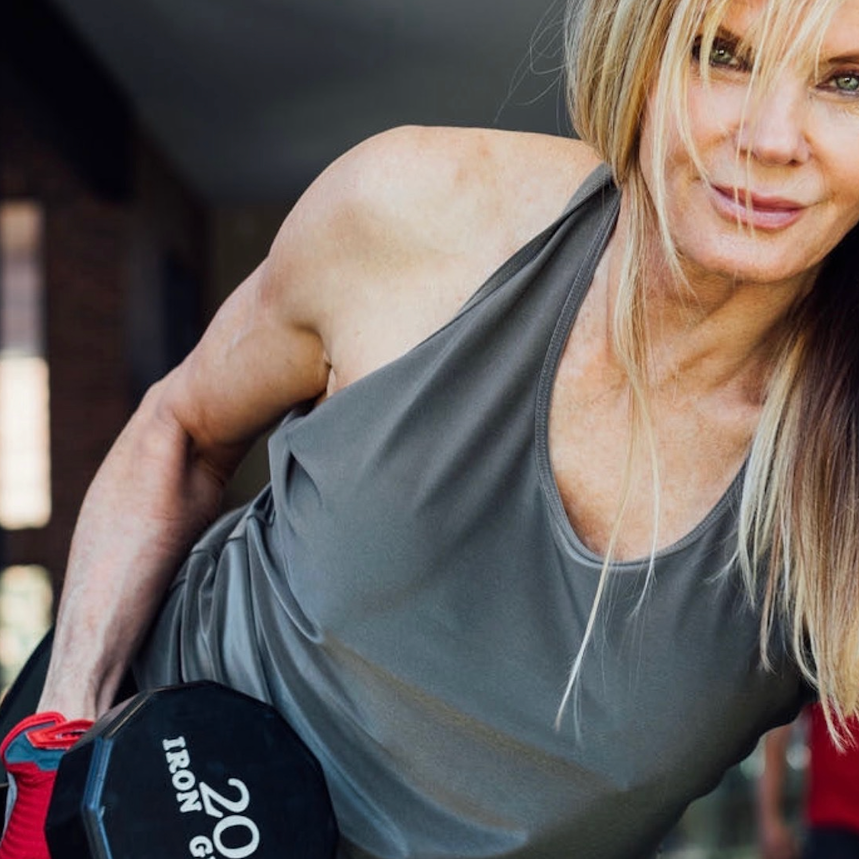Outsmart Belly Fat The Easy Way

Losing belly fat is important for a variety of reasons… not just vanity.
Fat, especially belly fat, is an important and dangerous factor for your overall health, because it correlates with a number of diseases, including diabetes, heart disease, and certain cancers.
Visceral fat, the kind of fat that creates muffin tops and spare tires surrounds your intestines, liver and stomach.
Belly fat is a marker that your health is going downhill. It doesn’t matter if you’re 40 or 70, you can outsmart belly fat.
Women especially tend to notice belly fat around the waist. Some of this has to do with hormones because they play a big role in every aspect of fat… including fat storage, gut bacteria, and cravings.
Maintaining hormonal balance starts with what’s on your plate. But not everybody’s body reacts thee same way to the same foods. Successful weight loss begins with blood sugar regulation.
When you eat food that’s full of empty calories, liquid calories, or quickly-absorbed sugars or carbs (rice, bread, potatoes, pasta), your cells slowly become resistant to the impacts of insulin, and in turn, your body becomes hungry and needs more food to keep your blood sugar levels stable.
This causes what’s called insulin resistance.
Inside the body, your digestive systems start to break these foods down into glucose, the simple sugar found in our body’s tissue. Glucose rushes through the bloodstream, which signals insulin, the hormone produced in the pancreas, to kick in. Insulin’s job is to sweep in and distribute that glucose to various cells in our organs, muscles, and brain.
Those cells, in turn, turn the glucose into energy. The more often you put your body through this roller coaster, the more insulin you have to produce to keep blood sugar balanced.
This process varies depending on our own genetic makeup, but it also depends on the makeup of our meals. The type of food we eat determines whether our insulin levels stay nice and balanced, or whether they skyrocket too quickly, creating that infamous blood sugar “spike” we should try and avoid. That spike leads to a crash in energy quickly afterward, leaving us groggy and often craving more sugar.
Here are a few telltale signs that we’ve been on the insulin resistance roller coaster for too many rounds:
- Gain fat (especially in the midsection)
- Vacillate between feeling anxious and tired
- Deal with various forms of inflammation
- See signs of premature aging
- May deal with high cholesterol, high blood pressure, depression, and low sex drive
- Lose muscle mass
That first sign…fat around the midsection… is of special interest here. The excess belly is an indicator that you may have metabolic syndrome or insulin resistance.
By emphasizing lean protein, veggies, complex carbs and fat at each meal, you can step off the blood sugar rollercoaster and outsmart sugar cravings that sabotage your progress.
Enjoying well-balanced protein smoothies throughout the week helps slim the waistline and keep blood sugar levels balanced…especially when you’re in a time crunch!
Protein also supports weight loss because it causes you to feel full, making it much easier to leave the table. This is partly due to how much effort it takes your body to break down and utilize the protein. It is work (and work means energy) for your body to divide proteins into amino acids that are absorbed and transported by the blood to cells for use.
So, the mere act of breaking down protein is burning calories and keeping your blood sugar stabilized in the process.
Foods high in protein also help you feel full because they usually contain fat as well. The combination of fat and protein can keep you less hungry between meals.
Ready for a dose of protein’s power? Stock up on these 10 nutrition-packed protein sources.
POWERHOUSE PROTEINS
Grass-fed meat – Rich in vitamins A and E, powerful antioxidants
Wild-caught fish – Salmon, tuna, anchovies, trout, bass, flounder, mackerel, and sardines
Cage-free eggs – super source of protein
Organic poultry – Chicken, turkey, and duck are all good protein options and contain a variety of beneficial nutrients
Bone broth – Healing compounds like collagen, glutamine, glycene, and proline that have the power to transform your health. Good for your joints!
Free-range organ meats – Liver is full of an array of B vitamins, vitamin A, selenium, and folate.
VEGETARIAN PROTEIN OPTIONS
Greek yogurt – 23g of protein per cup
Lentils – 4g of protein per 1/4 cup (cooked)
Beans (chickpeas, black beans)- 4g of protein per 1/4 cup
Cottage cheese – 14g of protein per 1/2 cup
Hemp seeds– 4g of protein per 1 Tbsp
Chia seeds– 3g of protein per 1 Tbsp
Hemp seeds– 5g of protein per 1/4 cup (shelled)
Green peas– 8g of protein per 1 cup
Almonds– 3g of protein per 1/2 oz




